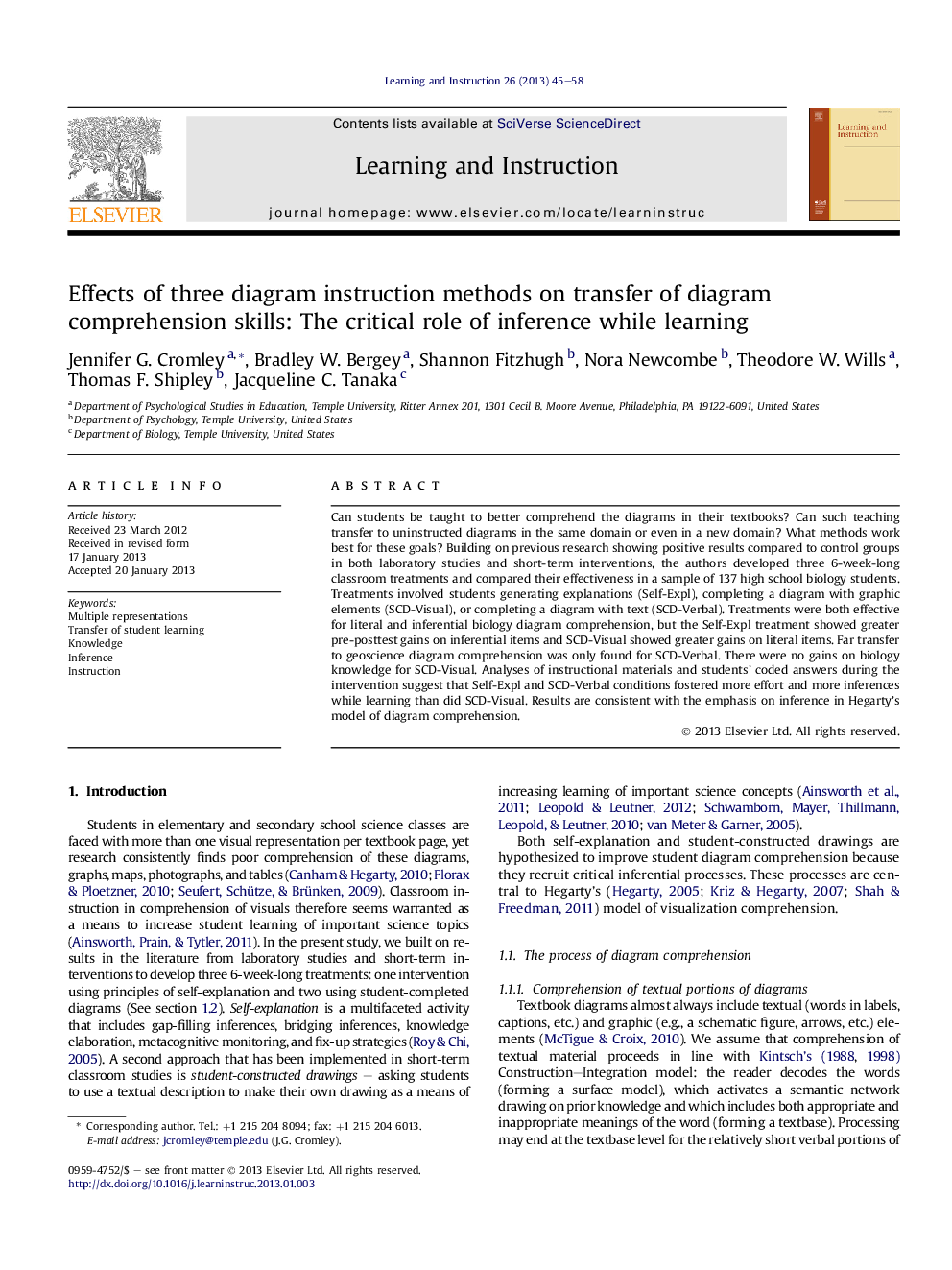| Article ID | Journal | Published Year | Pages | File Type |
|---|---|---|---|---|
| 365643 | Learning and Instruction | 2013 | 14 Pages |
Can students be taught to better comprehend the diagrams in their textbooks? Can such teaching transfer to uninstructed diagrams in the same domain or even in a new domain? What methods work best for these goals? Building on previous research showing positive results compared to control groups in both laboratory studies and short-term interventions, the authors developed three 6-week-long classroom treatments and compared their effectiveness in a sample of 137 high school biology students. Treatments involved students generating explanations (Self-Expl), completing a diagram with graphic elements (SCD-Visual), or completing a diagram with text (SCD-Verbal). Treatments were both effective for literal and inferential biology diagram comprehension, but the Self-Expl treatment showed greater pre-posttest gains on inferential items and SCD-Visual showed greater gains on literal items. Far transfer to geoscience diagram comprehension was only found for SCD-Verbal. There were no gains on biology knowledge for SCD-Visual. Analyses of instructional materials and students' coded answers during the intervention suggest that Self-Expl and SCD-Verbal conditions fostered more effort and more inferences while learning than did SCD-Visual. Results are consistent with the emphasis on inference in Hegarty's model of diagram comprehension.
► Self-explanation and two student-constructed conditions improve diagram comprehension. ► Self-explanation and student-constructed verbal had larger effects on knowledge. ► Far transfer to geoscience diagram comprehension only for student-constructed verbal. ► Self-explanation and student-constructed verbal fostered more effort and inferences.
